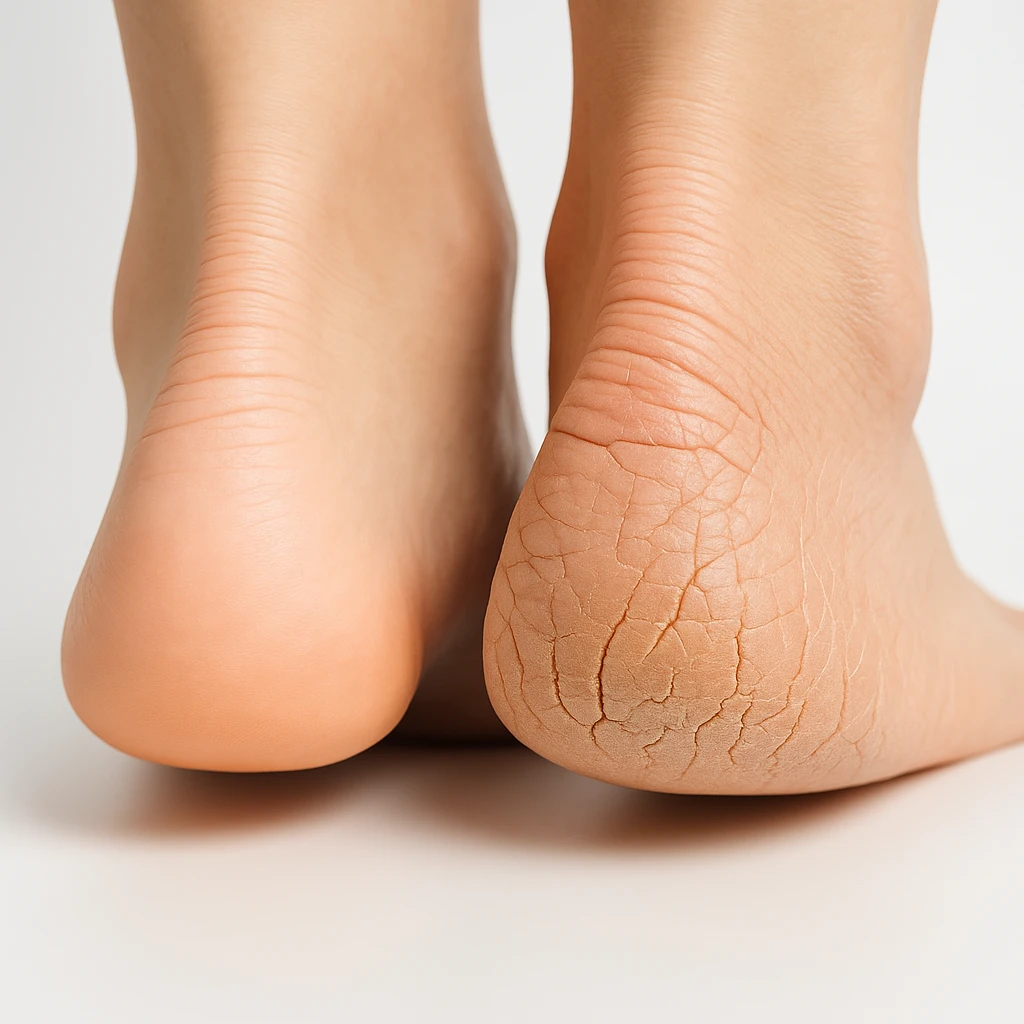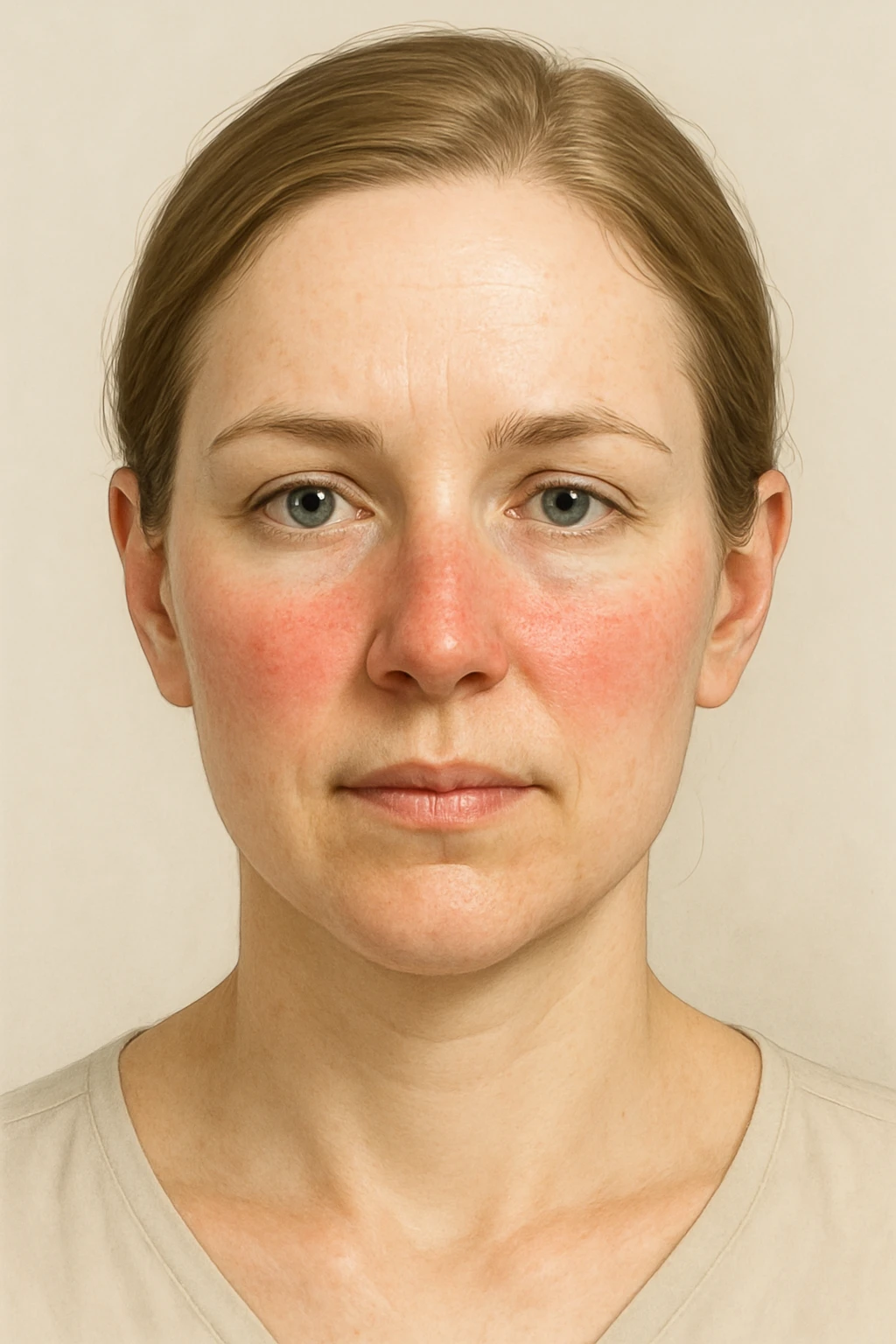Flaky Skin Symptoms, Diagnosis, and Care Options
Flaky Skin: What It Means and Why It Happens
Defining Xerosis and Xeroderma
Flaky skin, medically known as xerosis or xeroderma, occurs when the outermost layer of the skin, the stratum corneum, becomes excessively dry and scaly. This happens when the skin’s natural moisture and protective lipids are depleted, leading to visible flaking and roughness. In more advanced cases, the dryness is referred to as asteatosis, meaning the skin lacks adequate surface lipids that normally protect against water loss.
- Xerosis/Xeroderma: General medical term for dry, flaky skin.
- Asteatosis: A more advanced form involving reduced surface lipids.
These terms represent varying degrees of the same underlying issue-insufficient moisture retention and lipid content in the skin barrier. While often mild and temporary, persistent xerosis indicates a deeper disturbance in the skin’s ability to regulate hydration and protect itself from environmental stress.
The Skin Barrier and Moisture Regulation
The skin barrier is a structured network of lipids, ceramides, and natural moisturizing factors that prevent excessive evaporation while maintaining smoothness and flexibility. When this barrier is intact, it effectively locks in water and resists external irritants such as cold air or detergents.
In flaky skin, the lipid composition-particularly ceramides-is disrupted. Reduced ceramide content weakens the lipid matrix between skin cells, allowing moisture to escape more easily. This process, known as increased transepidermal water loss, marks the onset of barrier dysfunction. As the barrier weakens, the skin becomes more prone to dryness, itching, and inflammation.
The Biology of Flaking
Flaking appears as a visible result of disrupted barrier function. Without adequate lipids and hydration, the outer skin cells lose cohesion and shed prematurely, forming fine scales and rough patches. The loss of moisture also reduces the flexibility of the stratum corneum, causing tightness and itching.
If the barrier is not restored, dryness and shedding can become chronic, leading to persistent discomfort. Understanding this biological process underscores why restoring hydration and lipid balance is essential in managing and preventing flaky skin.
Who Experiences Flaky Skin and Why
Epidemiology in Adults and Older Adults
Flaky skin (xerosis) is one of the most common dermatologic findings in older adults. Studies estimate that its prevalence ranges from 41% to 99%, depending on the population and care setting. This range reflects variations in health status, environmental exposure, and skincare habits. Although anyone can experience dryness, xerosis tends to worsen with age as the skin’s ability to retain moisture decreases.
- Prevalence in older adults: approximately 41%-99% depending on care setting.
- Severity increases with declining health and reduced mobility.
- Decreased oil and sweat gland activity contributes to dryness.
Among elderly individuals, the severity of flaky skin often correlates with general health and mobility. Limited movement or prolonged exposure to dry indoor environments increases dryness. Reduced gland activity and thinner skin add to this vulnerability, making consistent hydration and barrier care essential for maintaining healthy skin.
Common Environmental Triggers
Environmental conditions strongly influence the occurrence of flaky skin. Cold or low-humidity weather accelerates moisture loss, while frequent hot showers or harsh soaps strip away natural oils. Occupational exposure-such as in healthcare or cleaning-can also increase dryness through repeated handwashing.
- Cold or dry climates accelerate transepidermal water loss.
- Hot water bathing and harsh soaps remove natural lipids.
- Frequent handwashing in some professions increases dryness risk.
When these external stressors combine with preexisting dryness or aging skin, they can lead to visible scaling and discomfort. Maintaining balanced humidity and gentle cleansing habits helps prevent flare-ups.
Health-Related Factors
Beyond environmental causes, systemic diseases such as diabetes, chronic kidney disease, and thyroid disorders increase susceptibility to xerosis. These conditions alter fluid balance, lipid metabolism, and cell turnover, compromising the skin’s ability to retain moisture.
| Systemic Condition | Impact on Skin Hydration |
|---|---|
| Diabetes | Disrupts fluid balance, reducing skin moisture retention. |
| Chronic kidney disease | Alters waste elimination and overall hydration levels. |
| Thyroid disorders | Impacts metabolism and lipid production in the skin. |
Flaky skin associated with these conditions may require medical attention. Addressing the underlying disease often improves skin function, emphasizing the link between systemic health and the skin barrier.
Recognizing and Evaluating Flaky Skin
Common Clinical Features
Flaky skin is typically recognized by visible dryness and fine scaling. Common signs include roughness, tightness, and itching. In some cases, affected skin may appear dull or grayish due to the buildup of dry scales. Severity often fluctuates with humidity and temperature, while persistent xerosis suggests chronic barrier dysfunction.
- Visible dryness and fine scaling
- Roughness, tightness, and itching
- Dull or grayish appearance in severe cases
- Fluctuating intensity with climate changes
Itching (pruritus) is common and can range from mild to distressing. Scratching worsens dryness, perpetuating a cycle of irritation and scaling. Recognizing these patterns aids in proper assessment and treatment planning.
Typical Locations on the Body
Flaky skin most often affects areas with fewer sebaceous glands, such as the lower legs, forearms, hands, and feet. These regions naturally produce less sebum, making them prone to moisture loss and barrier disruption due to daily wear and friction.
- Lower legs
- Forearms
- Hands
- Feet
In moderate to severe cases, dryness may spread to larger body areas, particularly in cold or dry conditions. Recognizing distribution patterns helps distinguish xerosis from other skin disorders.
Clinical Evaluation and Differential Diagnosis
Diagnosis of flaky skin is primarily clinical, based on texture, distribution, and severity. Clinicians also assess systemic factors such as chronic disease or medication effects. Grading severity helps determine treatment intensity.
| Condition | Distinguishing Features |
|---|---|
| Xerosis | Dryness and scaling without inflammation or plaques. |
| Eczema | Itchy, red, inflamed areas, sometimes oozing. |
| Psoriasis | Thick silvery scales on well-defined red plaques. |
| Seborrheic dermatitis | Greasy yellow scales, typically on the scalp or face. |
Differentiating xerosis from eczema, psoriasis, and seborrheic dermatitis depends on recognizing inflammation and scaling patterns. Accurate diagnosis ensures proper treatment and exclusion of more complex conditions.
When to See a Doctor
Seek medical care if dryness becomes painful, cracked, or resistant to moisturizers, or if redness, swelling, or infection develops.
Treating Flaky Skin: Restoring the Barrier
Topical Hydration Therapy
The foundation of managing flaky skin lies in restoring the skin barrier. Emollients and humectants are essential: emollients smooth and soften by filling micro-gaps between cells, while humectants attract and retain moisture in the stratum corneum. Used together, they restore suppleness and prevent dehydration.
- Emollients: Smooth and soften the skin by filling gaps between cells.
- Humectants: Draw and retain water in upper skin layers.
- Ceramide-based moisturizers: Replenish lost lipids and aid repair.
Ceramide-rich formulations are particularly effective. Regular moisturization alleviates tightness, reduces itching, and lowers infection risk. Applying after bathing seals in moisture for greater hydration.
Supporting Care and Lifestyle Changes
Comprehensive care extends beyond topical treatments. Gentle cleansing using mild, non-foaming cleansers and avoiding hot water minimizes barrier damage. Maintaining indoor humidity and protecting against cold, dry air also prevent flare-ups.
- Use mild, fragrance-free cleansers.
- Avoid hot showers and over-scrubbing.
- Maintain adequate indoor humidity.
- Limit exposure to cold, dry air.
Managing systemic conditions such as diabetes, kidney disease, and thyroid dysfunction improves skin resilience and long-term barrier stability.
Medication-Related Dryness
Certain medications can trigger or worsen flaky skin. Retinoids, diuretics, and some chemotherapy or cholesterol-lowering drugs reduce lipid production or disrupt water balance. Awareness of these effects allows clinicians to adjust care appropriately.
| Medication Group | Effect on Skin |
|---|---|
| Retinoids | Decrease lipid production, increasing dryness. |
| Diuretics | Increase water loss, reducing hydration. |
| Chemotherapy agents | Impair cell renewal and barrier repair. |
Patients on these therapies may benefit from more frequent moisturization or barrier-repair creams. Coordination with healthcare providers helps balance medical treatment and skin care.
Myths vs. Facts
- Myth: Frequent long baths hydrate the skin.
Fact: Over-bathing, especially in hot water, strips oils and worsens dryness. - Myth: Natural oils replace moisturizers.
Fact: Oils reduce water loss but do not restore essential lipids or humectants.
Preventing Recurrence and Supporting Long-Term Skin Health
Daily Prevention Strategies
Maintaining healthy skin and preventing recurrent dryness depend on consistent daily care. Gentle cleansing routines are essential-using mild, fragrance-free cleansers helps protect the skin’s natural barrier. Avoiding harsh detergents or over-washing prevents further lipid loss and irritation. Routine moisturization remains the most effective step for limiting flare-ups; applying emollients immediately after bathing helps lock in hydration and supports repair of the stratum corneum.
- Use mild, fragrance-free cleansers.
- Avoid harsh detergents and excessive washing.
- Apply moisturizers immediately after bathing to lock in moisture.
- Maintain consistency in skincare routines to reduce flare-ups.
Regular skincare practices tailored to the skin’s condition make a significant difference in comfort and resilience. When hydration and lipid balance are maintained through consistent moisturization, symptoms such as flaking, tightness, and itching are less likely to recur. Ongoing care is key to reducing episodes of flaky skin over time.
Environmental and Behavioral Approaches
Environmental conditions strongly influence the skin’s ability to stay hydrated. Using a humidifier in dry or air-conditioned rooms helps maintain indoor moisture levels, reducing the rate of water loss from the skin. Protecting exposed areas from cold, dry wind and minimizing contact with irritants like alcohol-based products or rough fabrics also support long-term barrier maintenance.
- Use a humidifier in dry or air-conditioned environments.
- Protect skin from cold, dry weather with appropriate clothing.
- Avoid alcohol-based or irritating skincare products.
- Pat skin dry gently instead of rubbing after bathing.
Simple habits such as moderating bath temperature, limiting shower duration, and patting the skin dry rather than rubbing all help reduce mechanical and thermal stress. These measures, combined with consistent emollient use, form the foundation of long-term control of xerosis and prevention of seasonal flare-ups of flaky skin.
Long-Term Outlook and Future Therapies
With consistent care and avoidance of known triggers, most people experience steady improvement in dryness and flaking. Regular moisturization and gentle skincare can keep symptoms minimal and manageable. However, ongoing attention to daily habits remains crucial, as xerosis can easily recur when the barrier is compromised.
Emerging research in skin barrier science continues to refine prevention and treatment strategies. Innovations such as biomimetic and lipid-replenishing moisturizers are being developed to mimic the skin’s natural structure more closely, offering improved hydration and durability. This progress underscores the importance of barrier-focused therapy as a long-term solution for maintaining skin health.
Frequently Asked Questions About Flaky Skin
- Is flaky skin the same as dry skin?
- Flaky skin is a form of dry skin in which the outer layer loses moisture and sheds visible scales. It often reflects a weakened skin barrier rather than simple dehydration.
- Why does flaky skin get worse in winter?
- Cold air and low humidity reduce the skin’s ability to retain water, while indoor heating further dries the air. These factors make dryness and flaking more pronounced during colder months.
- Can flaky skin be a sign of a medical condition?
- Yes. Systemic diseases such as diabetes, kidney disease, or thyroid disorders can cause or worsen dryness by disrupting fluid balance and lipid production in the skin.
- Which parts of the body are most prone to flaking?
- Areas with fewer oil glands-like the lower legs, forearms, hands, and feet-are most commonly affected. These regions naturally lose moisture more quickly.
- How can moisturizers help improve flaky skin?
- Moisturizers containing emollients and humectants restore lipids and attract water to the surface, strengthening the barrier and reducing tightness or itching.
- Do long hot showers help hydrate dry, flaky skin?
- No. Prolonged or hot bathing strips away natural oils, worsening dryness. Short, lukewarm showers followed by moisturization are more effective for maintaining hydration.
- Can certain medications make skin flakier?
- Yes. Retinoids, diuretics, and some chemotherapy drugs can reduce lipid production or alter hydration, leading to increased dryness and flaking.
- What lifestyle changes help reduce flare-ups of flaky skin?
- Maintaining indoor humidity, using mild cleansers, avoiding harsh soaps, and protecting the skin from cold or dry air all help reduce recurring dryness.
- When should someone see a doctor about flaky skin?
- Seek medical care if the skin becomes cracked, painful, or unresponsive to moisturizers, or if redness, swelling, or infection appears.
- Is flaky skin a long-term condition?
- For most people, flaky skin improves with consistent care. However, it can recur when the barrier is disrupted or during seasonal changes, requiring ongoing attention.













